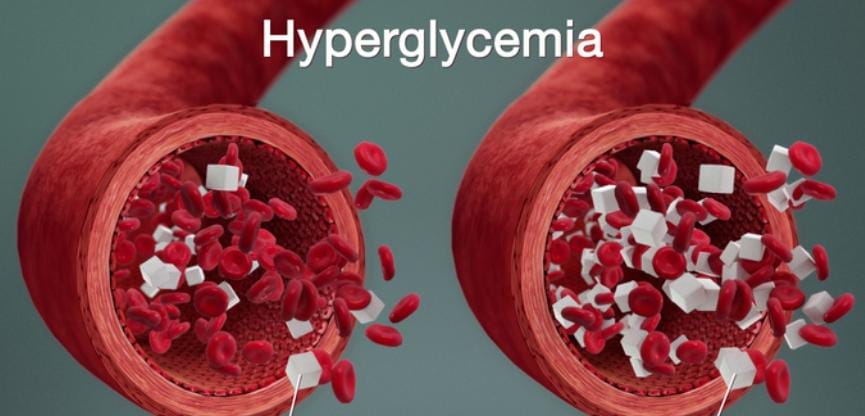The food that we consume is converted into glucose to give us energy. The normal blood glucose level is between 100 and 130 mg/dl. When there is a higher concentration of glucose in the blood, we term it as hyperglycemia. This also refers to high blood sugar levels and diabetes. The Department of Diabetes and Endocrinology states that high blood glucose levels occur when there are low insulin levels in the body. It also implies that the person has diabetes. When we do not treat this condition, it can affect the organs, tissues, and nerves in the long term.
Causes of hyperglycemia:
Several factors can lead to hyperglycemia. The major causes are as follows.
- Inappropriate dosage of insulin and other medicines that lower the blood glucose levels
- Eating a rich carbohydrate meal
- Poor synthesis of insulin hormone
- High-stress levels
- Infections and illness.
Several risk factors cause hyperglycemia in the body. These risk factors are,
- Type 2 diabetes mellitus
- Gestational diabetes
- Polycystic ovarian syndrome
- Obesity
- Excess blood cholesterol levels
- High blood pressure
Hyperglycemia diagnosis:
The Department of Diabetes and Endocrinology has defined certain parameters of a healthy blood sugar range. These values are as follows.
- The blood sugar level before food should be between 80 and 120 mg/dl for those who are below 59 years of age.
- The blood sugar level should be between 100 and 140 mg/dl for people who are 60 years and older.
- The American Diabetes Association recommends target blood sugar levels as 80 and 130 mg/dl before meals and less than 180 mg/dl, two hours after taking food.
- The best way to diagnose hyperglycemia is through blood sugar levels. It is also pertinent to perform home blood sugar monitoring.
- HbA1C monitoring is also an important parameter of blood glucose levels. This test shows the average blood sugar level for the past 2 to 3 months. It measures the percentage of glucose attached to the hemoglobin. Its level should be less than 7%.
FAQ
What are the symptoms of hyperglycemia?
Early signs of hyperglycemia are 3Ps (polyurea- frequent urination, polydipsia- excess thirst, and polyphagia- excess eating). Other signs are headache, fatigue, and blurred vision. Long-term symptoms are weight loss, vaginal infections, and slow-healing sores.
Treating hyperglycemia:
It is mandatory to consult with experts from the Department of Diabetes and Endocrinology to treat excess blood glucose levels. The experts generally suggest the following treatment options.
- Regular exercise is a must. This is the best way to keep the blood glucose levels under control.
- Doctors will prescribe diabetic medicines to control the blood glucose levels. It is important to take these medicines without skipping them.
- It is mandatory to follow a hyperglycemia diet plan. This includes eating several small portions of meals in a day. It also suggests avoiding sugary beverages and snacking.
- It is important to check blood glucose levels often. Doctors will also change the course of treatment depending on blood glucose levels.
- Some patients might have to take insulin shots to manage the excess blood glucose levels.
- In cases of severe hyperglycemia, doctors will admit the patient to the emergency room and infuse fluids intravenously to flush out the glucose through urine. They will also suggest insulin therapy to metabolize the glucose levels.
Bottom Line:
Hyperglycemia is the result of a lack of adequate insulin in the body. This could be due to issues in the pancreas. Or the inability of the body to metabolize the excess glucose in the blood. Insulin resistance is the major cause of hyperglycemia, as per the experts at the Department Of Diabetes & Endocrinology. Lifestyle change, hypoglycemic medicines, and insulin therapy are the best ways to maintain normal blood glucose levels.


